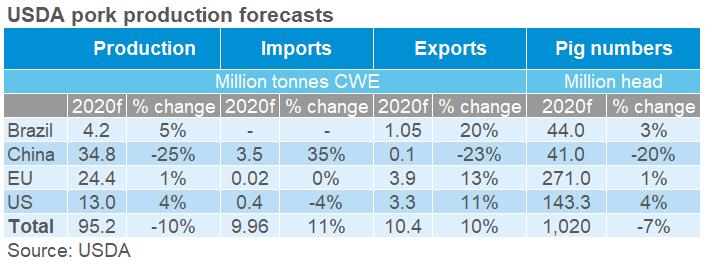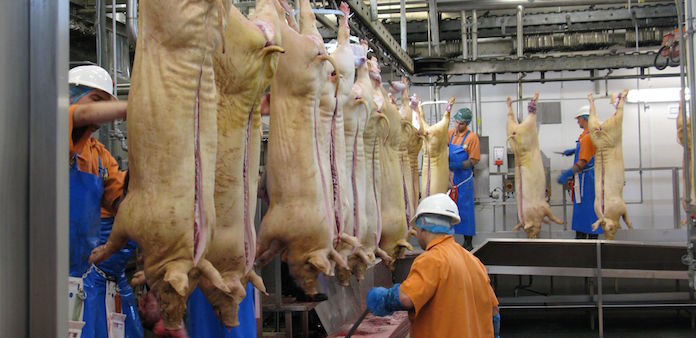Global pork production in 2020 is forecast to fall by 10% on the year, to 95.2 million tonnes, according to the latest outlook from the USDA. If realised, this will be the lowest level since 2007.

The ongoing outbreak of African swine fever (ASF) that is expected to drive down production. Most of the major exporters are forecast to show growth, capitalising on the increased demand from nations affected by ASF. However, this is not enough to compensate for the expected decline in production from China, Vietnam, and the Philippines.
Chinese pork production is projected to fall by a quarter in 2020, to 34.8 million tonnes. In August, the domestic pig herd was recorded at nearly 40% smaller than a year earlier. The sow herd also recorded a similar drop, which may limit producers’ ability to restock, despite strong prices. Lower domestic production will increase reliance on imports, and so imports next year are expected to reach 3.5m tonnes.
Chinese pork consumption is expected to fall by over 20% in 2020. Consumers initially turned away from pork due to disease concerns, despite ASF posing no risk to human health. However more recently, it is higher prices that are increasingly seen as a barrier to purchase.
The US is in a favourable position to increase shipments to China. Despite US products facing tariffs of up to 72.5%, the recent uplift in Chinese pig prices mean some US products are still competitive. However, recent announcements suggest that China may allow significant volumes of pork to be imported without the retaliatory tariffs.
Brazil has already been able to capitalise on the growing demand from China. Pork exports are expected to increase by 20% in both 2019 and 2020. However, Brazilian exports are limited by the number of sites that are approved by the Chinese authorities.
EU exports are also expected to benefit from strong Asian demand. However, falling domestic consumption and a smaller pig herd will likely limit production growth. As such, EU production is only projected to increase modestly next year.




